Donald Duck

You likely thought of Donald Duck’s erratic behavior as just his quirky personality, but some cartoon experts believe his behavior is the result of PTSD. This would explain why he experiences frequent flashbacks, has difficulty reacting to normal stimuli, and feels angry and anxious.
Where did this PTSD come from? Most likely, it originated from Donald Duck's experiences during WWII, in which he fought the Japanese. And there's the fact that he still dresses like a sailor. Donald just needs some therapy and probably some medication to get him through this. WWII is over, Donald; it's time to come back.
Peter Pan
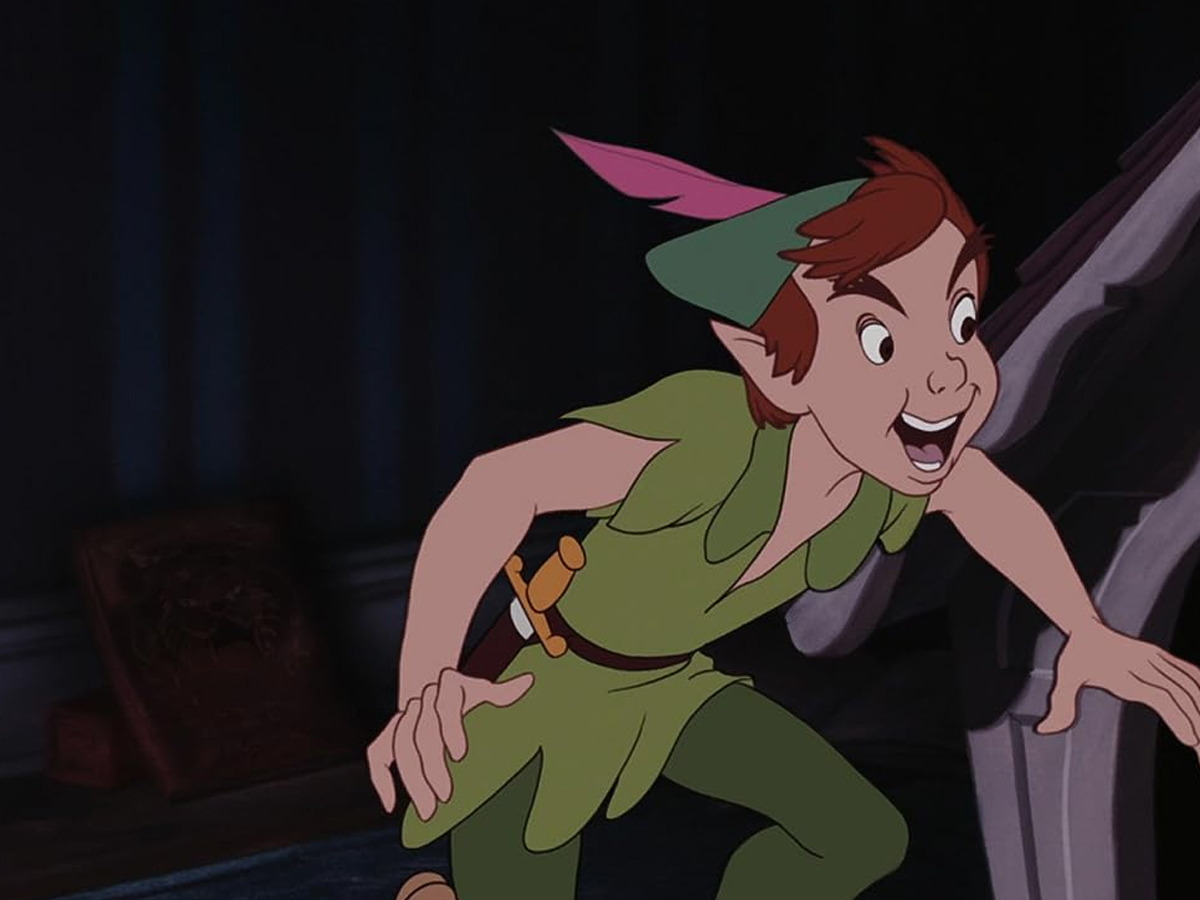
Why don't the lost boys grow up? A popular theory from Reddit suggests that Peter Pan is the true villain of his very own film and that Captain Hook is a misunderstood former Lost Boy merely trying to help free the current crew of Lost Boys from the clutches of the evil Peter Pan.
It is speculated that Peter Pan wipes out all the Lost Boys who grow up, since Neverland is supposedly a place where no one grows up. And yet, the story revolves around a ship full of grownup pirates trying to defeat Pan. But where did they come from? Interestingly, in the newest iteration of the story, Peter Pan & Wendy, Hook is portrayed as a former Lost Boy who was kicked out of the group.
Looney Tunes: Wile E. Coyote

There are numerous theories about why Wile E. Coyote is constantly chasing the roadrunner, moreover, the same roadrunner, episode after episode, only to fail again and again. One says that he’s stuck in the netherworld and that this is his form of torture, but another says that he’s stuck in a time loop.
Wile E. Coyote’s endless pursuit involves scheme after scheme with no progress and the same predictable outcome – usually involving him falling off a cliff. Now, normally falling off a cliff would result in death, but not if you were stuck in a perpetual time loop (think Groundhog Day).
Scooby Doo
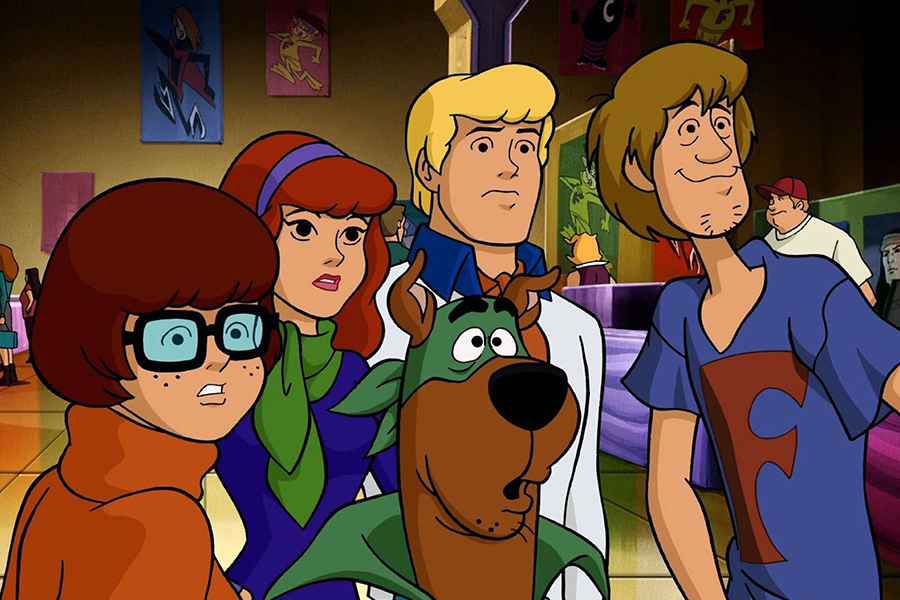
Scooby Doo is surrounded by many dark theories, but one of the most interesting and believable theories is that Scooby Doo is set during a severe economic depression. This would explain why everything is so dilapidated and why professors, celebrities, and other “successful” people are forced into a life of crime to survive.
The rundown buildings, desperate criminals, and why a group of teenagers are out making money instead of going to school. There's also the fact that the schools have likely had to shut down because they wouldn't be able to pay the teachers. It's also safe to say that the gang doesn't have much money since they wear the same thing daily.
My Little Pony
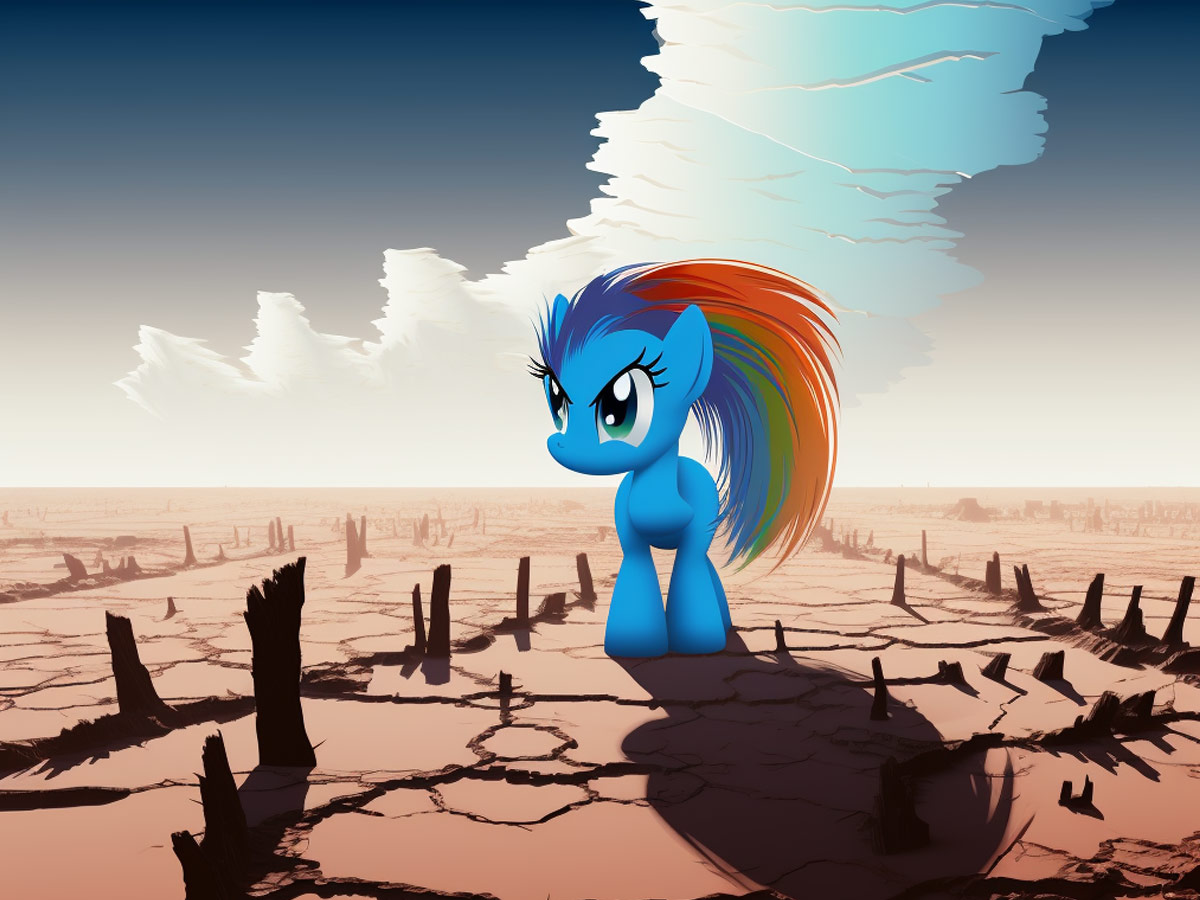
Bikini Bottom and Bedrock aren’t the only supposed post-apocalyptic worlds; there’s also Equestria from My Little Pony to consider. The world inhabited by the ponies has all sorts of mystical creatures but no humans in sight, except for the relics left behind – abandoned buildings and artifacts that ponies couldn’t have built.
The theory suggests that all the creatures of Equestria are mutated versions of animals that existed before Earth’s collapse – mutations that likely occurred as a result of radiation exposure. Everything the ponies use and wear in Equestria is merely technology they salvaged from the previous civilization.
SpongeBob SquarePants: 7 Deadly Sins Theory

Another theory about SpongeBob SquarePants or, more specifically, the cast of characters in Bikini Bottom suggests that each character is a different embodiment of the seven deadly sins, in accordance to Christian teachings. The most obvious would have to be Mr. Krabs, who's a symbol of Greed.
Then there’s Patrick Star, the Sloth, and Gary the Snail, who’s a symbol of gluttony. Sandy would be a representation of Pride, while Plankton would be Envy. Squidward, who constantly seeks revenge against SpongeBob, who annoys the living daylights out of him, represents wrath. And lastly, we have Pearl, who embodies Lust, as she’s always out chasing boys.
The Flintstones
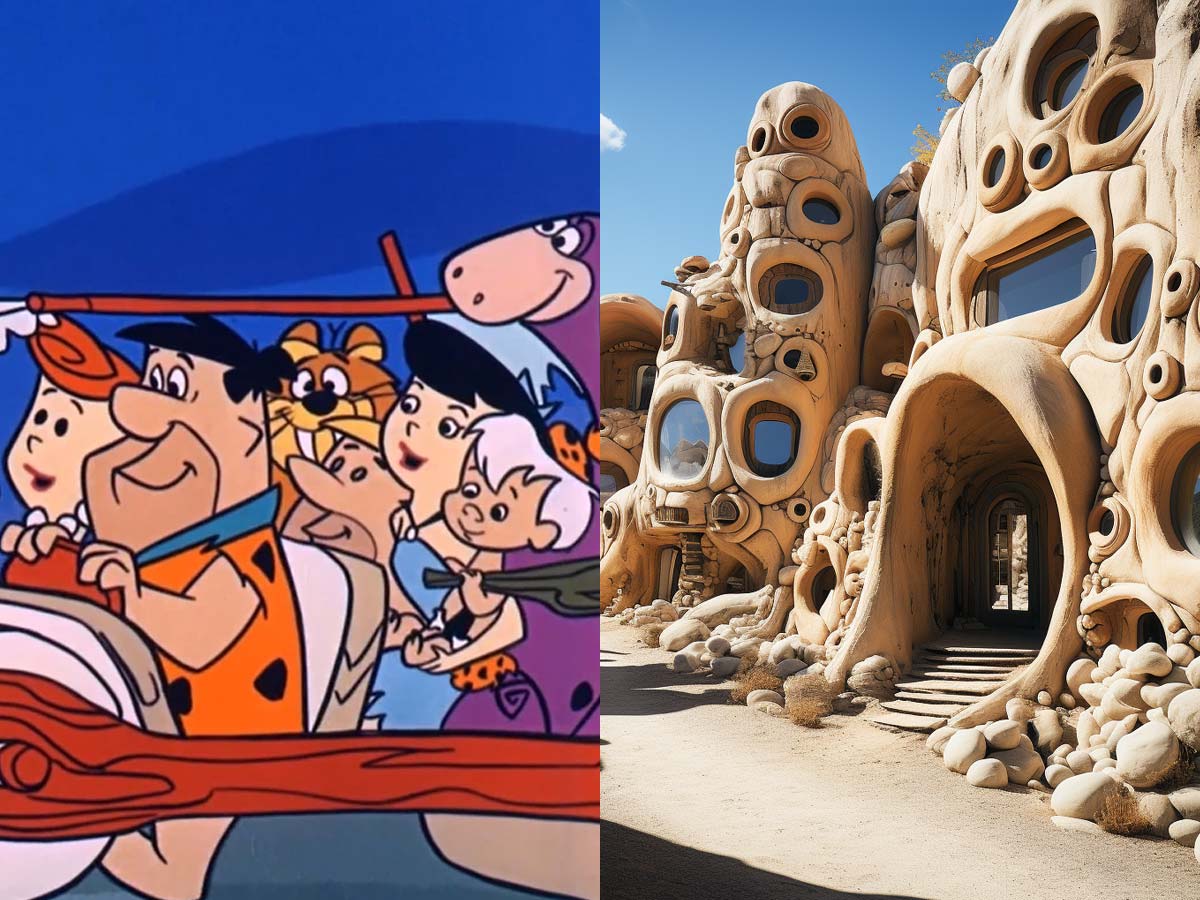
Any true scientist will tell you that dinosaurs and man did not live together, and yet The Flintstones is set in a world they both share. But is this an alternate reality or a vision of the future? According to the theory, it is the latter, wherein The Flintstones is set in a post-apocalyptic future.
And it does explain a few things. For one, Bedrock clearly mirrors our own, or at least as it was in the 1960s. There are drive-in movies, restaurants, and all sorts of things that didn’t exist during the time of the cavemen. We could just boil it down to the fact that it’s just a cartoon, but perhaps, the truth is a bit darker.
Aladdin
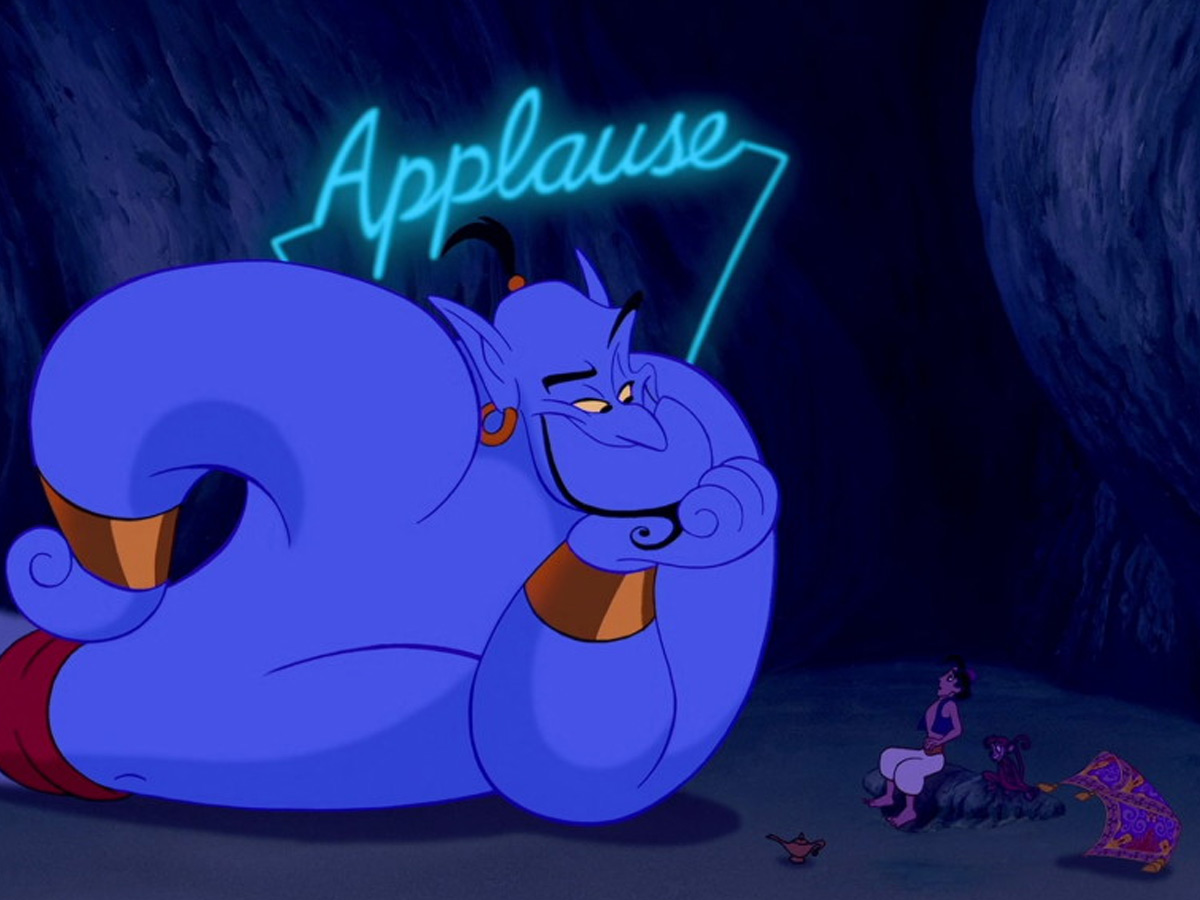
Aladdin’s various anachronisms might exist merely for comedic effect, but they have led many fans to speculate that Aladdin exists in a post-apocalyptic world. After all, how else would Genie know about Jack Nicholson and Arnold Schwarzenegger, or casinos and applause signs for that matter?
And it doesn’t end there. There are little things like the fact that Aladdin wears a fez hat that wasn’t invented until the 19th century. Little goofs they may be, or perhaps, someone set the proverbial reset button on the earth, and alas, we have the world of Aladdin. It’s possible!
Toy Story 3

This one might be a bit of a stretch, but we can certainly see the parallels. It’s worth noting that Toy Story 3 was one of the darkest entries of the series. In it, the toys are forced to leave their home and are sent to a daycare in which they are poorly treated and basically imprisoned.
During the film's final act, there’s also a sequence in which the toys are about to be incinerated. While the parallels may be unintentional, we can see them. It’s not exactly a normal thing to incinerate your toys, after all, unless you are Sid from the first movie…
Winnie the Pooh
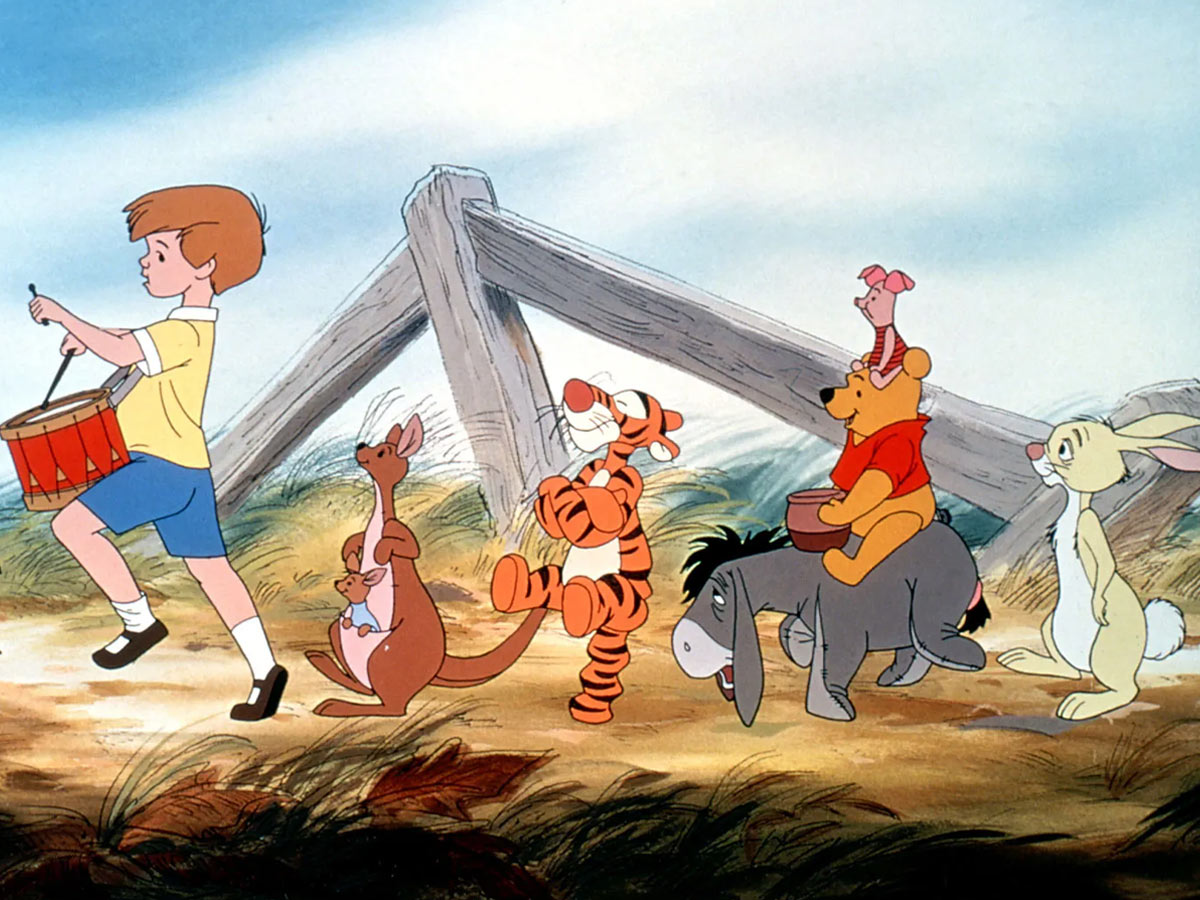
One theory about the characters in Winnie the Pooh suggests that they all need medical attention, as each one of them is an embodiment of some form of mental health disorder. The most obvious would have to be Eeyore, who clearly suffers from depression. But it certainly doesn’t end there.
Obsessed with eating honey throughout the day, one could say that Winnie the Pooh suffers from an eating disorder. Tigger, meanwhile, has been said to suffer from ADHD as he has a constant need for stimulation as he literally bounces around the Hundred Acre Wood. And then there’s Piglet, who suffers from some kind of anxiety disorder. And we could go on, but you get the point.
The Little Mermaid and Frozen

The controlling patriarchal figure King Triton is decidedly not innocent and definitely bears ill will towards humans, so it's not hard to imagine him sinking ships unprovoked. The ship scene in the Frozen films resembles the ship scene underwater in The Little Mermaid, leading fans to believe that King Triton sunk that ship.
Already it was confirmed via onscreen cameos that Tangled and Frozen take place in the same universe, so why not throw The Little Mermaid into the mix? These stories also take place in around the same area, with Frozen representing Norway, Tangled as Germany, and The Little Mermaid in Denmark.
Care Bears
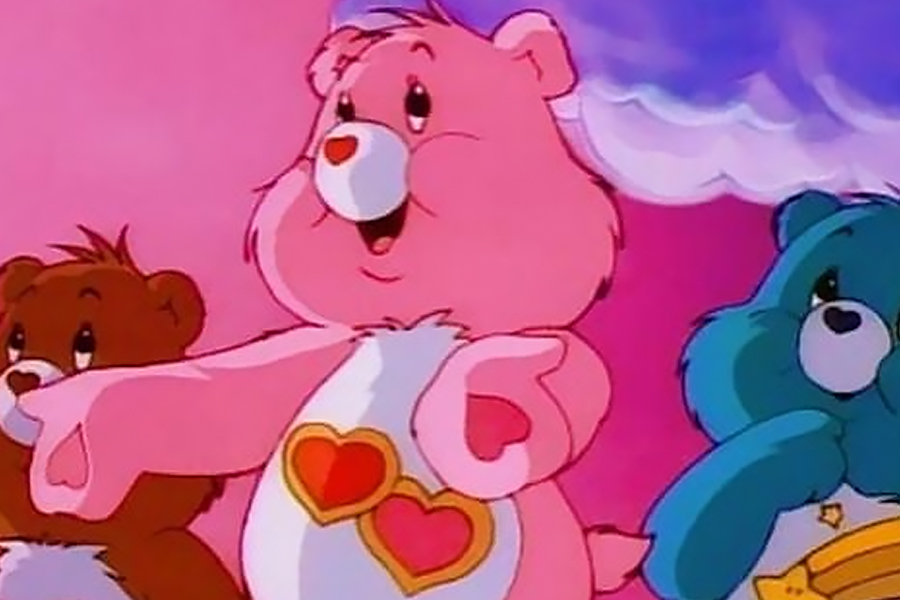
Care Bears just want to be your friend and teach you about the value of sharing, right? Maybe. One theorist has noticed considerable similarities between the Care Bears and Voodoo teachings, including that the real-life heart of the Voodoo world is called “Carefours” in Port-au-Prince, Haiti, and the symbols on the Care Bears' tummies match the symbols of Voodoo gods.
If the Care Bears are indeed embodiments of voodoo spirits, that doesn't necessarily mean the Care Bears are trying to indoctrinate your children. Or does it? Let's hope not, anyway. However, one must feel a little vindicated in not trusting the Care Bear image.
SpongeBob SquarePants: Nuclear Testing Theory
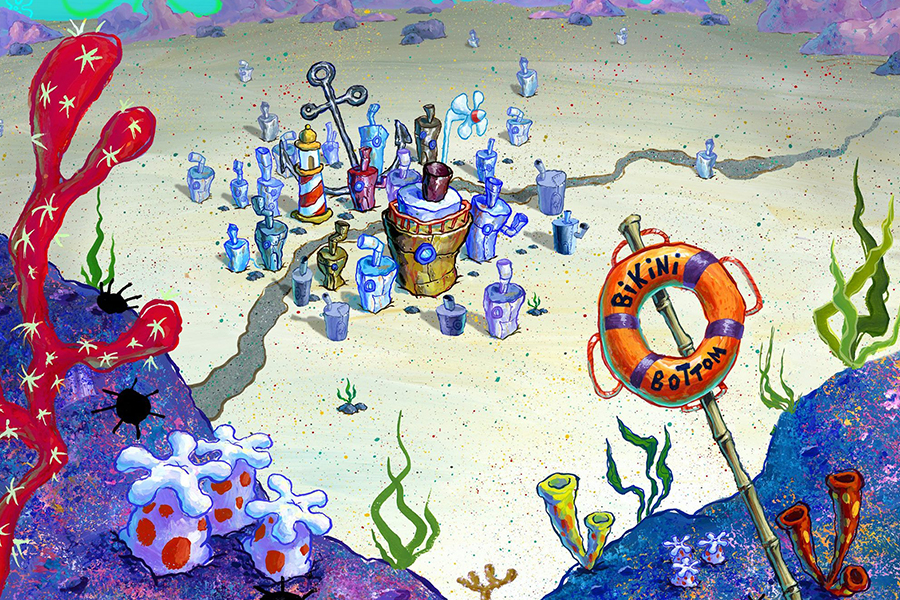
There are countless theories surrounding this popular show about a sea sponge, but one of the most popular theories is that the very existence of SpongeBob, Patrick, Squidward, and everyone else who lives in Bikini Bottom is the result of nuclear testing that was conducted on the Bikini Atoll during the 1940s and 1950s. Why else would one live in a pineapple under the sea?
Digging deeper into this theory, a Reddit user pointed out that Bikini Bottom may be named as such because it's located beneath Bikini Atoll, a coral reef in the Marshall Islands where nuclear testing was prevalent from 1946 to 1958. it all makes sense when you think about it.
Rugrats
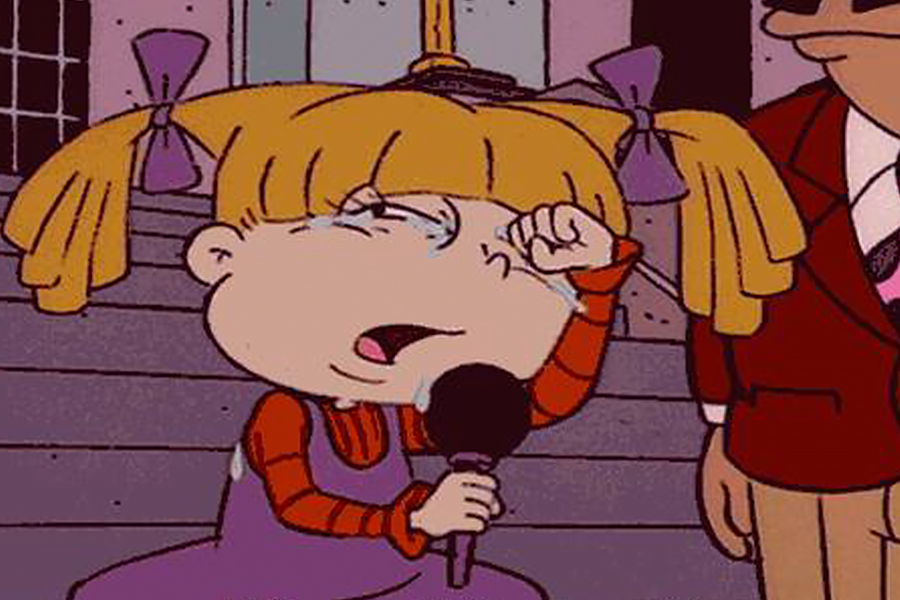
You may have heard of the theory that Angelica is the only Rugrats character who exists in real life. The twins, Chuckie, and Tommy, are all figments of Angelica’s imagination, and Suzie is the only other character who is actually alive. This theory definitely takes the idea of imaginary friends to another (depressing) level.
It explains why Angelica is so bitter and sees Susie as a rival. She's lonely and also dealing with the loss of her mom, who some fans believe was a victim of substance abuse, with the Cynthia doll being made in her mother's image - hence its appearance.
The Smurfs
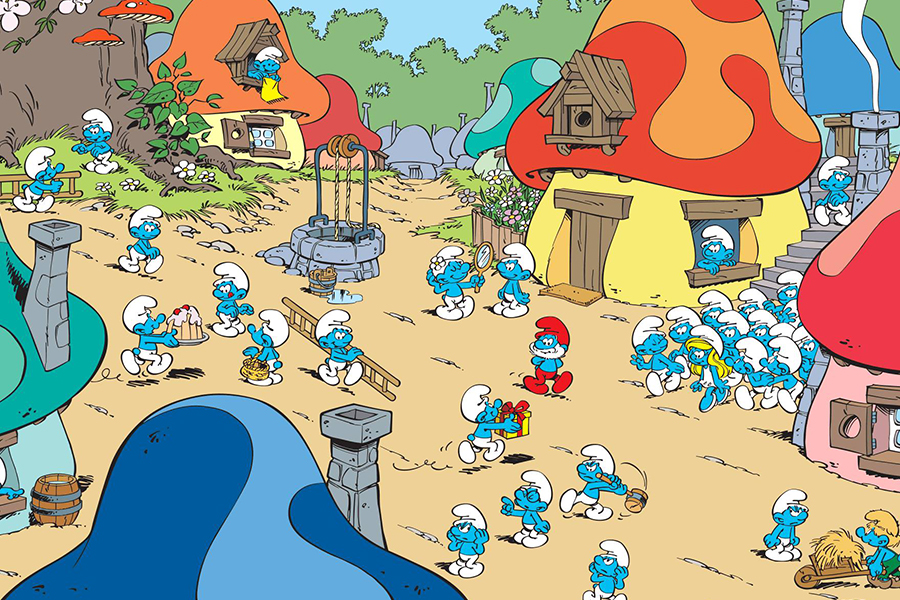
The Smurfs and the Smurfettes seem so innocent and adorable, so why do some theorists think they are white supremacists and anti-Semites? For starters, they all wear white, pointed caps, and their leader wears a red, pointed cap, just like members of the Ku Klux Klan. It might seem like a stretch...but you just wait. There's more!
Gargamel, the villain of the show, is a troubling combination of Jewish stereotypes, portrayed as a dark-haired, large-nosed, money-loving individual. He also has a cat named Azrael, the name of the Jewish angel of death. Convinced yet? At the very least, it's worth considering.
Charlie Brown

One of the most depressing theories surrounding cartoons is that Charlie Brown is actually dying of cancer. This would explain why he is bald at such a young age and why his life is filled with so much turmoil. This theory speculates that Charlie channels his sadness into his dreams, which is where the plot of the cartoon originates.
It's also worth noting that in the Peanuts world, parents are decidedly absentee, and who else would dream of a world without parents other than a child? Well, I mean other than people who have bad relationships with their parents. But that aside, the kids in Peanuts sure get away with a lot without any parents around.
Pokémon

Have you ever wondered why Ash never seems to age in the Pokémon cartoons? One theory is that he is actually in a coma, and everything that happens in the Pokémon world is happening inside his head. This is why there are all kinds of mystical creatures and unbelievably cooky characters. At least he has Pikachu by his side!
In the first episode of the series, Ash and Pikachu are attacked by a flock of Spearows, and then Pikachu blasts them with a massive electrical jolt. Ash seemingly walks away without a scratch, but what if he didn't? What if the reminding episodes are all in his head, and all the new Pokemon he finds are just figments of his imagination?
The Fairly Oddparents

The Fairly Oddparents help Timmy through many difficult times, which has led some people to believe that these fairy godparents are metaphors for Zoloft and Prozac. They’re there when Timmy needs to cope with his problems, and Timmy always experiences serious consequences if he “abuses” their magical powers.
Since this theory is only an allegorical reading, it can't necessarily be refuted, although we are sure you could poke holes in it. Nevertheless, it is an interesting interpretation, even if a child taking Prozac doesn't make a heck of a lot of sense. But, again, it's not meant to be a literal interpretation.
Pinky and the Brain
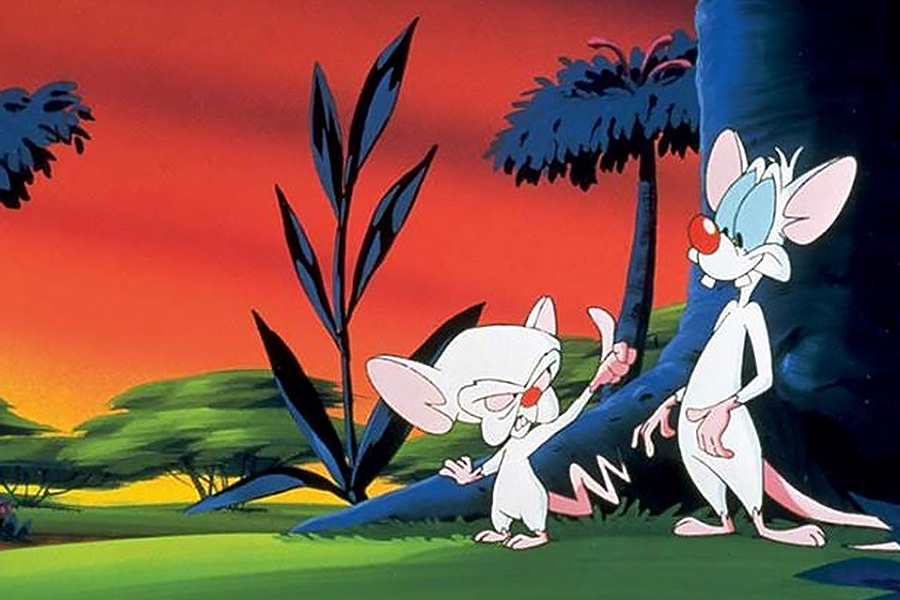
You probably still think that the Brain is the genius of this WB show and Pinky is the insane one, but you could be wrong. The show's theme song claims that "one is a genius, the other's insane," but it never says who is which one. Think about it: The Brain’s convoluted plans always go awry because he refuses to listen to Pinky ...
In the words of Einstein, "The definition of insanity is doing the same thing over and over and expecting different results." While Brain's schemes certainly change, they never seem to work, and he's not open to advice to the contrary. Furthermore, Pinky ends up succeeding on two occasions in their efforts to take over the world before Brain ends up messing everything up.
Inspector Gadget
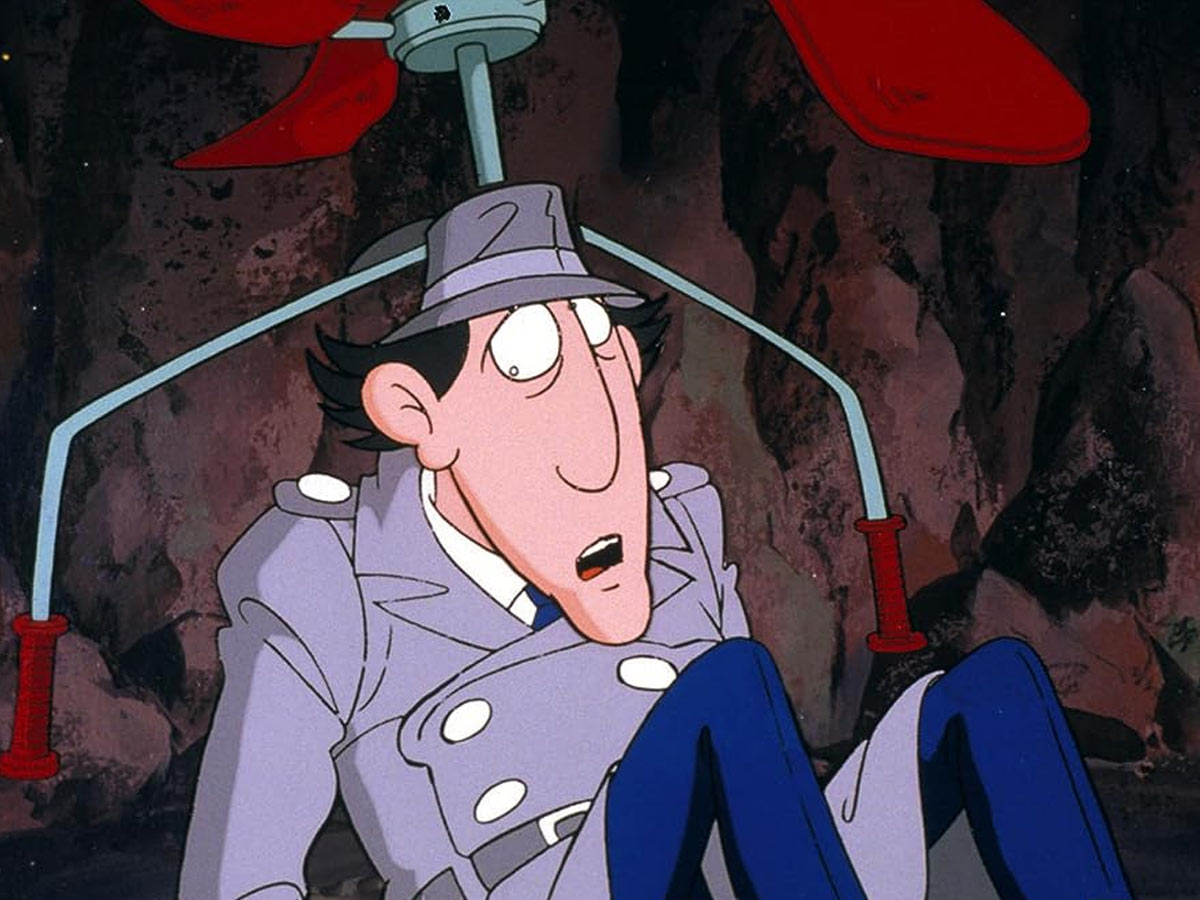
The incompetent but lovable cyborg detective, Inspector Gadget, may not be who we think he is, according to one fan theory. The theory suggests that the Inspector Gadget we think we know is really a robotic replica designed by his own niece and that Claw is the real Inspector Gadget who was believed to have been killed in an explosion.
While this might seem like a stretch, it does explain a few things. For one, it explains why we never see Claw’s face. It also explains why he only is interested in defeating “Inspector Gadget” when, in fact, his niece is the bigger threat. But I guess we’ll never know the truth.
Ed, Edd n Eddy

Peach Creek in Ed, Edd and Eddy is the show’s main setting. The suburban neighborhood is flooded with children but no adults in sight. You don’t even see Ed, Edd nor Eddy’s parents, in fact. So, why is that? According to the theory, all the children of Peach Creek are trapped in a purgatory for deceased children.
This theory is supported by the fact that the three main characters seem to be stuck in the cul-de-sac that they inhabit. Each character in the show seems stuck in time, doomed to repeat their behaviors, never changing and never growing. It’s pretty dark, but maybe there’s some truth to it.
WALL-E
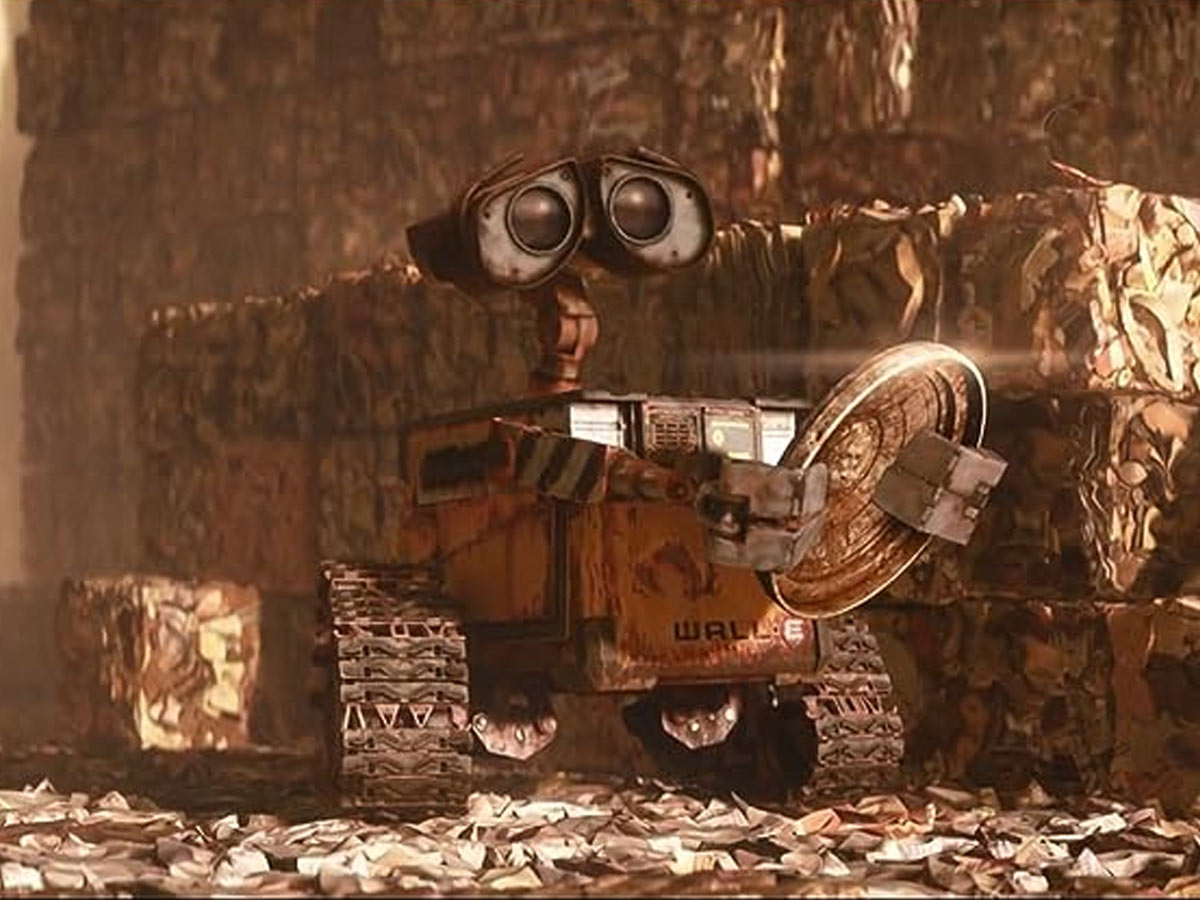
WALL-E might be about the cutest robot ever put on screen but don’t let those big, beautiful eyes fool you. He may just have a dark secret behind them. A theory about WALL-E suggests that WALL-E was the AI that doomed the planet, and all that junk he’s compacting is, in fact, robots that he’s destroyed for parts.
He left just enough junk to make a home for himself, and the rest of it was left scattered across the planet. That’s not to say that WALL-E was responsible for all the damage done by mankind. That message still stands. We’re just saying that maybe WALL-E finished off what was left of the earth.
Doug

If you’ve ever seen Doug, the one thing you know about him is that he has a very vivid imagination, and on top of that, you might also say some degree of paranoia. While you might say Doug daydreams just as much as any other child, Doug tends to act out his daydreams in the physical world, which is abnormal.
Sometimes Doug’s fantasies lead him into dangerous situations, occasionally situations that could have gotten him killed. Furthermore, you have to consider Doug’s numerous personas like Quailman, Jack Bandit, Smash Adams, and Race Canyon – all unique - and all inspiring him to act out in various ways.
It’s worth thinking about, at the very least.
The Magic School Bus

One theory about The Magic School Bus sets the show and Dr. Who in the same universe. The theory posits that Ms. Frizzle is really a renegade Time Lord, much like The Doctor. She shares a similar wild personality and often mingles with young people, sending them off on dangerous adventures.
Moreover, she operates a sentient vehicle that can travel through space and time, much like Dr. Who’s TARDIS. The point being that Ms. Fizzle behaves similarly and has the powers of the Doctor lends to the theory that Ms. Frizzle might just be a time-traveling extra-terrestrial.
The Powerpuff Girls and Samurai Jack
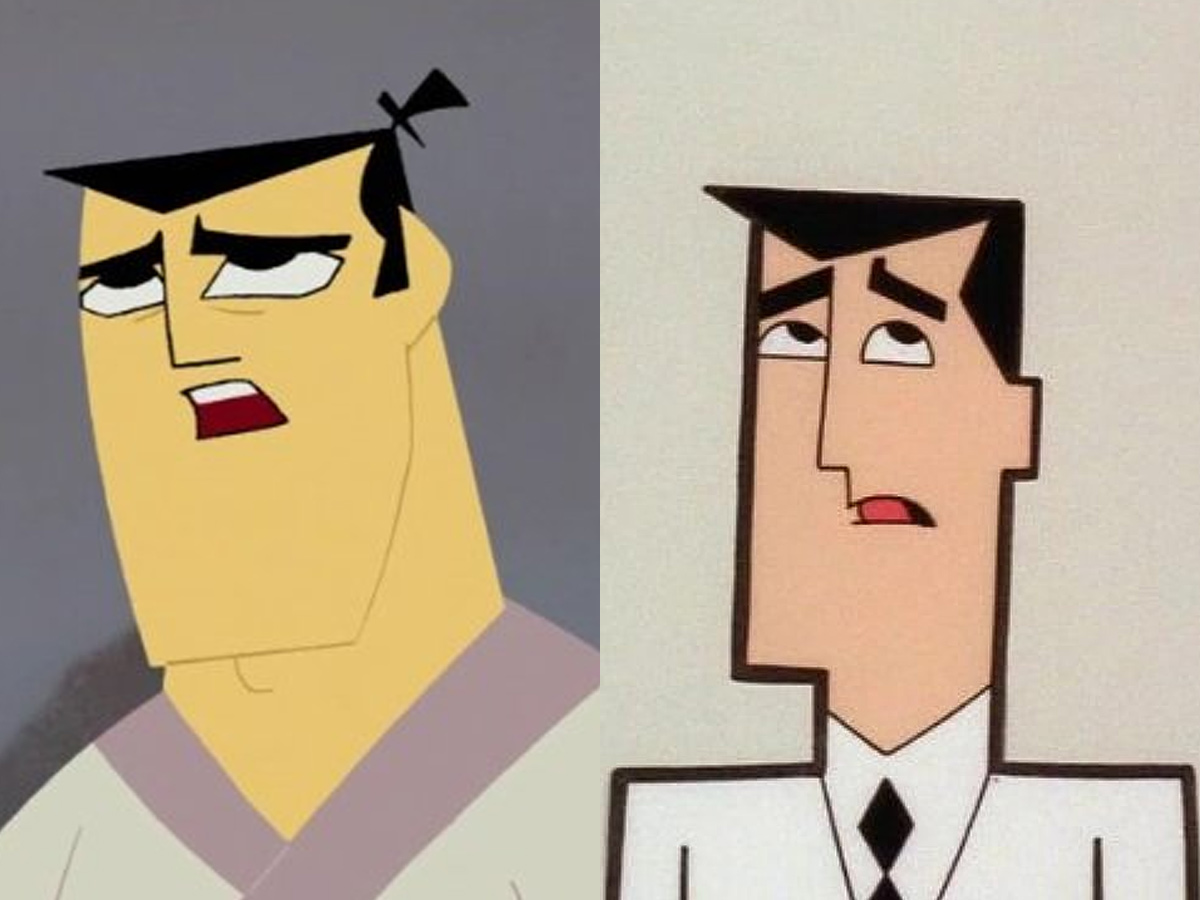
If you watched The Powerpuff Girls and Samurai Jack on Cartoon Network, you might have noticed that Professor Utonium and Samurai Jack bear a striking resemblance. Fans of both these shows have merged the two worlds into one with a theory suggesting the two characters are one and the same.
The theory is also supported by the fact that in one episode Samurai Jack wanders through a post-apocalyptic cityscape that resembles Townsville from Powerpuff Girls. Further, the theory suggests that Aku is a shapeshifted form of Mojo Jojo, who went back in time to take over the world. Samurai Jack is then Professor Utonium trying to save his daughters.
Courage the Cowardly Dog
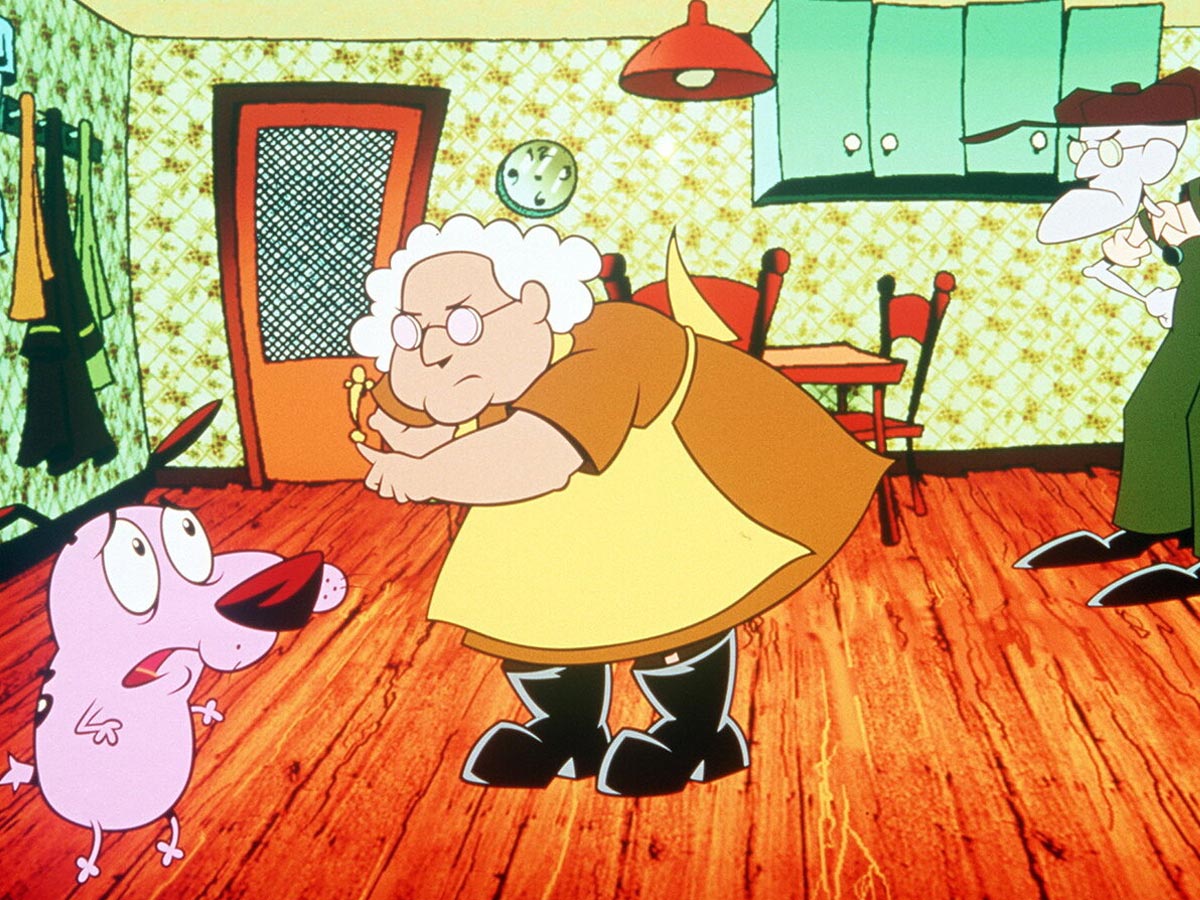
Courage the Cowardly Dog was a cartoon whose titular character often faced numerous supernatural monsters during his adventures. Trying to protect his owners like a good doggy, he faced his fears, despite being timid. But what if the monsters he saw weren’t actually real but rather representations of what he saw?
What if the monsters we thought we were seeing on-screen were actually just regular people, albeit maybe bad people sometimes, but people, nonetheless? This popular theory claims that we are merely seeing things from Courage’s perspective, which is to say that the people he’s seeing are monsters to his eyes.
Captain Hook and The Little Mermaid

Because of the similar design of the mermaids in Disney’s Peter Pan and The Little Mermaid, some fans have come to believe that the two cartoons take place in the same world. Taking that a step further, fans have suggested that Captain Hook might have unalived Ariel’s mother, who is missing from The Little Mermaid story.
It should be noted that this viral theory doesn’t just come out of thin air. In the direct-to-video prequel The Little Mermaid: Ariel’s Beginning, viewers can see Ariel’s mother, Queen Athena, and her father, King Triton, hanging out in a lagoon before getting attacked by pirates. The lagoon featured in the cartoon bears a striking resemblance to the one in Peter Pan. The theory also explains why Triton doesn’t trust people.
Casper and Richie Rich
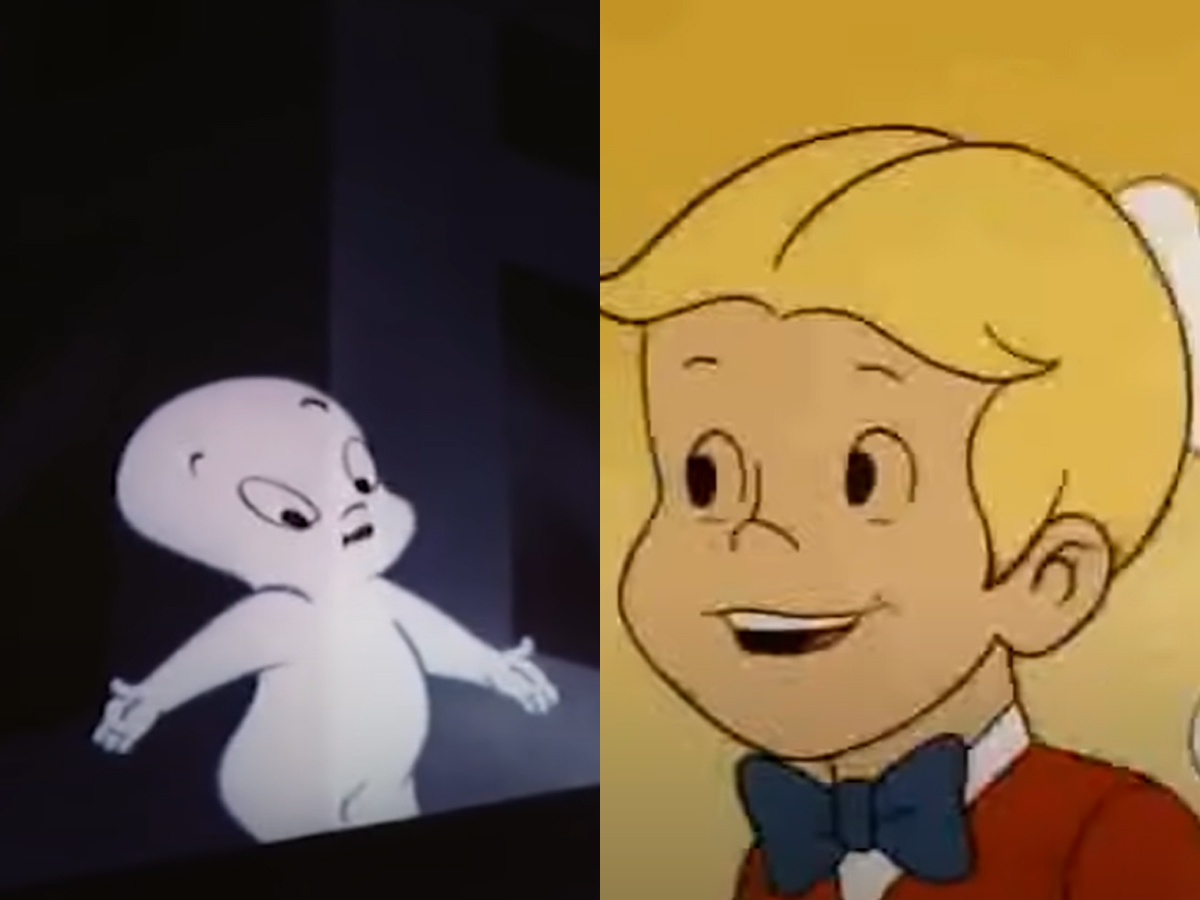
Casper and Richie Rich – two innocent characters, similarly drawn and both from the mid-20th century, seemingly have an uncomplicated backstory. Or do they? One theory claims that Richie Rich is Casper’s backstory and that Casper is the ghost of Richie Rich. This popular theory was even depicted in an episode of The Simpsons.
But what happened to Richie Rich that he became Casper? It’s already pretty dark that a friendly child ghost exists in the first place, so it’s not like you can ignore the fact that something grim happened. Many fans theorize that Richie Rich’s parents offed him for the insurance money. But I guess that secret dies with them.
The Simpsons
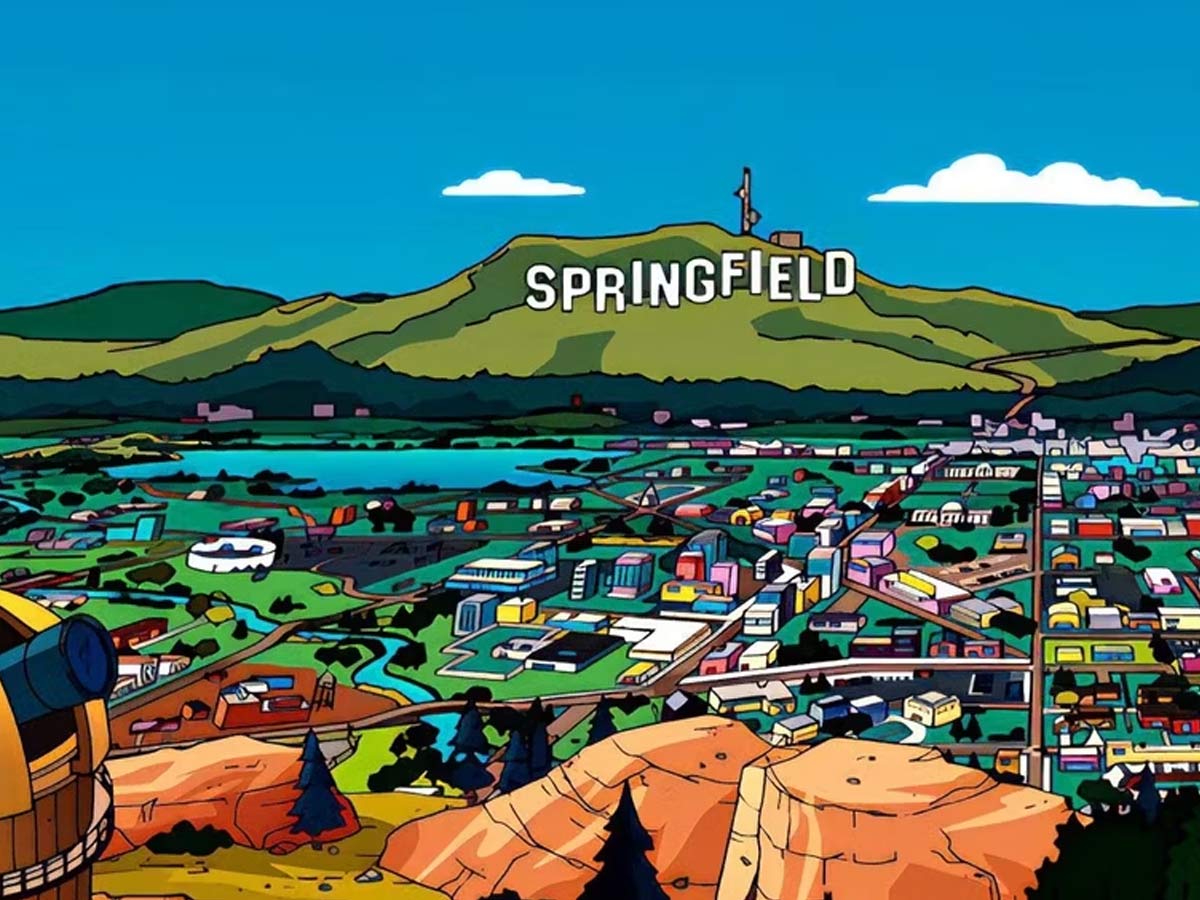
Springfield is a world much like the real world and even has references to pop culture from our world. But even though the references go way past the time period in which the show started, the city itself never really changes, and moreover, the characters never change. They don’t grow up, and they are static in terms of character development.
Sure, one might argue this is characteristic of any cartoon, but for Bart to stay a 10-year-old for over 30 years – something is definitely up. The lack of growth, in particular, has led many to wonder whether Springfield is actually purgatory. And let’s face it: if Homer was ever actually working at a nuclear power plant in life, there’s no way that didn’t end in disaster.
King of the Hill

While certainly not all children look and act like their parents, the differences between Bobby and Hank on King of the Hill are quite extreme, so much so in fact that it has led fans to question whether or not the two are actually related. Moreover, fans have noticed that Bill on the show bears a striking resemblance to Bobby.
Bill and Bobby seem to spend a lot of time together and have a close relationship and there might be a reason for that. Is it possible that Bill is Bobby’s real father? Of course, it is, but the show has never explicitly stated so. However, as Bill seems infatuated with Peggy, those feelings are not reciprocated, so it seems unlikely they’ll be getting back together.
 Author
Rachel Downs
Last Updated: November 05, 2025
Author
Rachel Downs
Last Updated: November 05, 2025